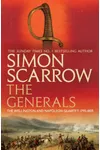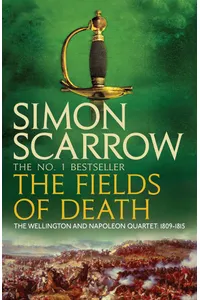Step into the thrilling world of Simon Scarrow’s Revolution series, where epic battles, clashing ideals, and the rise of two legendary figures—Napoleon Bonaparte and Arthur Wesley (the future Duke of Wellington)—await! This gripping historical fiction saga sweeps readers into the turbulent era of the French Revolution and Napoleonic Wars, blending meticulous research with heart-pounding storytelling. Perfect for fans of Bernard Cornwell or Robert Harris, Revolution offers a front-row seat to history’s greatest duel.
Across four novels, Scarrow masterfully traces the parallel journeys of two men destined to shape Europe’s future. From their childhoods to their climactic clash at Waterloo, the series captures the drama of war, politics, and personal ambition with a vivid, page-turning flair. Ready to march into this captivating world? Let’s explore how Revolution came to be and why it’s a must-read.
How Revolution Began
Born in Nigeria in 1962 and raised in Britain, Simon Scarrow was a history enthusiast turned teacher before becoming a bestselling author. After the success of his Eagles of the Empire series, which followed Roman soldiers, Scarrow turned his sights to the Napoleonic era. Inspired by the dramatic rivalry between Napoleon and Wellington, he launched the Revolution series (also called the Wellington and Napoleon Quartet) in 2006 with Young Bloods. His goal? To humanize these towering historical figures, showing their flaws, dreams, and growth through a thrilling narrative lens.
Scarrow’s passion for history shines through in his detailed research, though he admits to taking creative liberties—especially with the sparse records of Napoleon and Wellington’s early years. This blend of fact and fiction makes Revolution both educational and wildly entertaining, appealing to history buffs and casual readers alike.
The Heart of Revolution
The Revolution series unfolds over four books, each diving deeper into the lives of Napoleon Bonaparte and Arthur Wesley. Young Bloods (2006) kicks things off, tracing their childhoods—Napoleon as a fiery Corsican outsider and Wesley as a reserved noble with a knack for leadership. The Generals (2007) follows their rising military careers, with Napoleon facing accusations of treachery in France and Wesley battling in India to secure British interests. Fire and Sword (2009) sees Napoleon crowned Emperor, while Wesley’s victories in Spain spark hope for those resisting French rule. Finally, The Fields of Death (2010) builds to their epic showdown at Waterloo, a battle that reshapes Europe.
The series brims with themes of ambition, loyalty, and ideological conflict. Napoleon champions meritocracy, believing leadership is earned, not inherited, while Wesley staunchly defends monarchy and tradition. Scarrow’s vivid battle scenes, from Austerlitz to Trafalgar, pulse with intensity, but it’s the personal struggles—Napoleon’s ego, Wesley’s strained marriage to Kitty Pakenham—that add emotional depth. Set against the backdrop of a war-torn Europe, the series blends military strategy, political intrigue, and human drama, making every page a gripping ride.
Scarrow’s style is fast-paced yet rich, with alternating chapters that juxtapose the two men’s lives. This dual perspective highlights their differences and surprising similarities, creating a dynamic narrative that keeps readers hooked. Whether you’re drawn to epic wars or complex characters, Revolution delivers both in spades.
Why Revolution Resonates
The Revolution series has carved a niche among historical fiction fans for its bold take on two of history’s giants. Readers praise Scarrow’s ability to make Napoleon and Wellington feel real—flawed, driven, and human—while bringing the Napoleonic Wars to life with cinematic flair. Reviews highlight the series’ addictive pacing and rich historical detail, with fans on Goodreads calling it “a masterclass in storytelling.” Its appeal lies in its balance: it’s accessible for newcomers to the genre yet rewarding for history nerds.
Beyond its entertainment value, Revolution offers timeless insights into leadership, power, and the cost of ambition. By showing how personal beliefs shaped world-changing events, Scarrow’s saga remains relevant, sparking discussions about legacy and conflict. For those craving a deep dive into a pivotal era, this series is a treasure trove of drama and history.
- Publication Years: 2006–2010
- Number of Books: 4
- Setting: Europe, 1769–1815
- Genres: Historical Fiction, Military Fiction
Grab Young Bloods and dive into Revolution’s world of epic battles and unforgettable characters! Whether you’re a history lover or just craving a thrilling story, Simon Scarrow’s saga will keep you turning pages late into the night.


